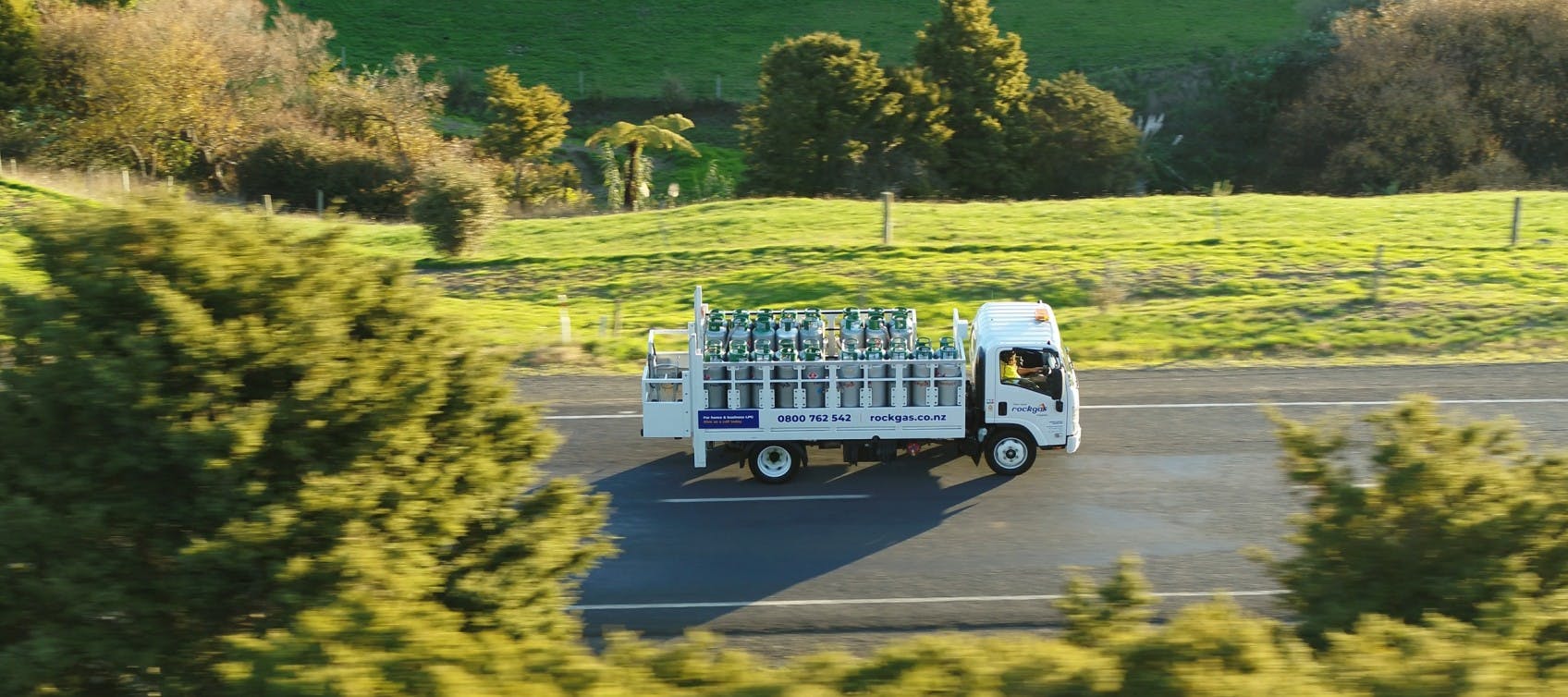Liquified petroleum gas, or LPG, is used in thousands of homes and businesses across New Zealand and particularly in the South Island. Many homes use 45kg LPG bottles to fuel their gas fires and hot water cylinders – providing instant heat all year round- as well as 9kg bottles to fuel the barbie.
New Zealand uses around 185,000 tonnes of LPG annually. We import 20,000 tonnes and the rest we produce domestically. While LPG is only meeting a tiny fraction of our total energy requirements and emits much less carbon dioxide than other fossil fuels, like coal and diesel it still contributes to our national greenhouse gas emissions. By switching to bioLPG (also known as renewable LPG or rLPG) we can reduce our emissions which helps New Zealand transition to a future with net zero carbon emissions.
What is bioLPG made of?
Conventional LPG is a byproduct of the natural gas extraction and refinement process, but bioLPG is made in a completely different way. Most often, it’s produced in a biofuel refinery as part of the biodiesel production method. The refinery takes sustainably produced vegetable oils and processes them into renewable diesel and bioLPG. At the moment, many of those vegetable crops still have a carbon footprint of their own, but as this reduces, so will the total emissions profile for bioLPG.
It’s also possible to make bioLPG from organic waste products. This includes the waste residue produced from animal feedstocks, and waste wood sourced from the forestry industry. Even algae is being investigated as a future source of bioLPG.
Despite being produced differently, bioLPG is chemically identical to the conventional LPG – it can be delivered, stored and used in exactly the same ways. You could swap one of your 45kg LPG bottles for a 45kg bioLPG bottle and you wouldn’t notice any change in the performance of your gas appliances. However, the renewable LPG would have around 80% lower carbon emissions. Those emissions should approach zero as the emissions used in producing the vegetable oils or feedstocks is also reduced.
Can New Zealand move to bioLPG in the future?
If bioLPG is an option in the future as we look for solutions to support decarbonising New Zealand, this wouldn’t need to have much of an impact on Kiwi households, including the good old kiwi barbie.
So how can we start making enough bioLPG to take its place? Right now, New Zealand is not producing bioLPG in any useful quantity. A planned biodiesel plant, which would also have produced bioLPG, was mothballed in 2020, and although some biodiesel is made here, it’s a very small amount.
However, internationally the industry is well-established, producing over 460,000 tonnes of bioLPG globally each year and moving it around Europe. It’s estimated that 40.7 million rural households in the EU could swap from using oil and coal to using bioLPG, and it could be a replacement fuel for Europe’s two million LPG boilers.
Europe and the United Kingdom are investing significantly in strategies to transition to renewable LPG so we can test and learn from them. Scandinavian company, Neste has been producing bioLPG since 2018 and in March 2021 made its first shipment of bioLPG to the UK’s largest LPG company, Calor. This shows us that the trading of bioLPG is feasible, as is large-scale distribution of bioLPG via existing networks.
 That demonstrates that New Zealand could likely make and import easily enough to cover our current LPG use, and research suggests we could replace 30% of LPG demand by 2035. The Government is interested in finding ways to support the scale-up of local biofuel production, which it notes is “particularly important for decarbonising the South Island.
That demonstrates that New Zealand could likely make and import easily enough to cover our current LPG use, and research suggests we could replace 30% of LPG demand by 2035. The Government is interested in finding ways to support the scale-up of local biofuel production, which it notes is “particularly important for decarbonising the South Island.
Turning wood and farm waste into renewable LPG
If New Zealand can begin to scale up bioLPG production, it could help us achieve a more circular economy. Our massive forestry and farming sectors create huge amounts of waste that could be turned into biofuels, including bioLPG. That would reduce the carbon footprint of our farming sector and reduce our heating emissions. One forecast shows that if New Zealand invested in several new biofuel plants, New Zealand’s LPG market could be 100% renewable by 2050.
 Alongside biogas and hydrogen technology, bioLPG shows that we can have a diverse energy market with low or zero-emissions options to suit every application. We can continue to have infinity showers, gas cookers, gas fires and gas barbeques, without having an adverse impact on the environment. It’s an exciting area for research and development, and one that Firstgas continues to support.
Alongside biogas and hydrogen technology, bioLPG shows that we can have a diverse energy market with low or zero-emissions options to suit every application. We can continue to have infinity showers, gas cookers, gas fires and gas barbeques, without having an adverse impact on the environment. It’s an exciting area for research and development, and one that Firstgas continues to support.

